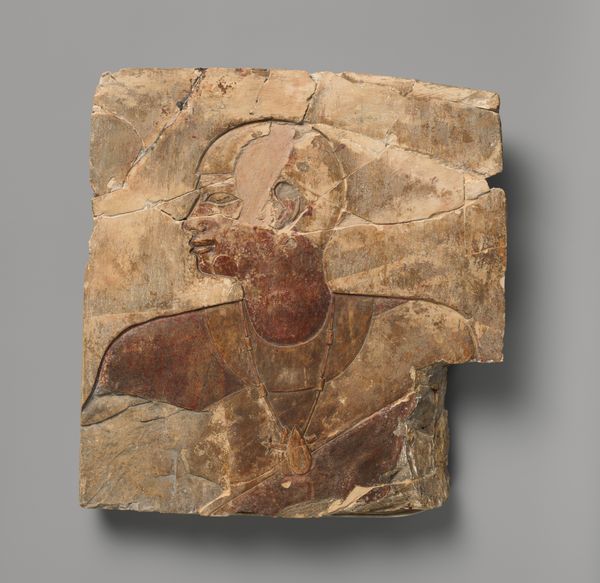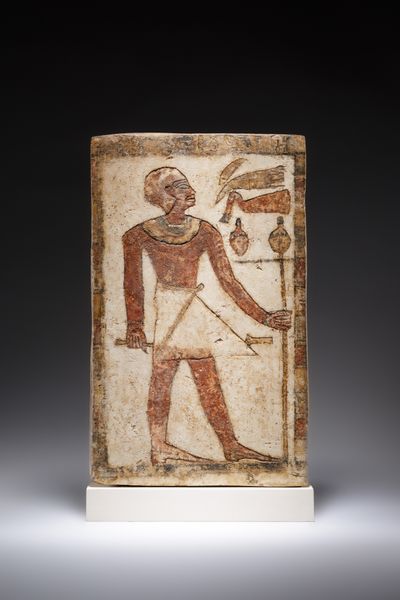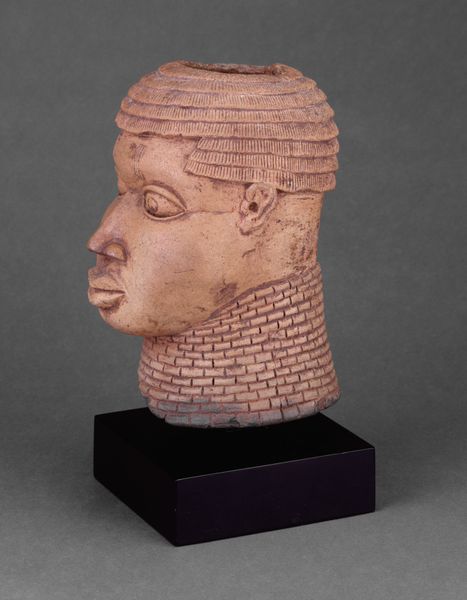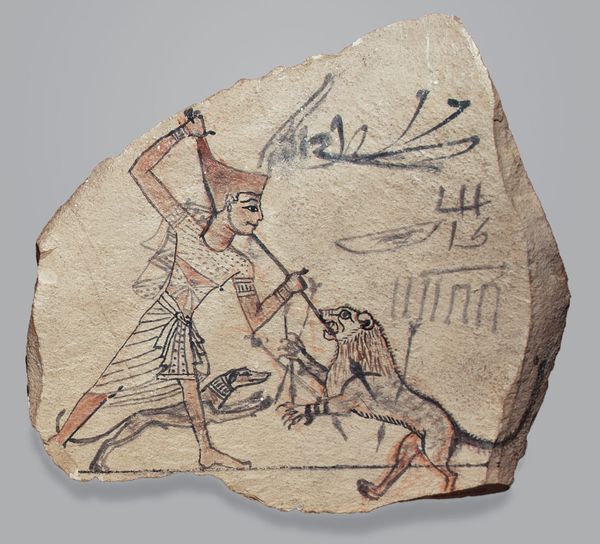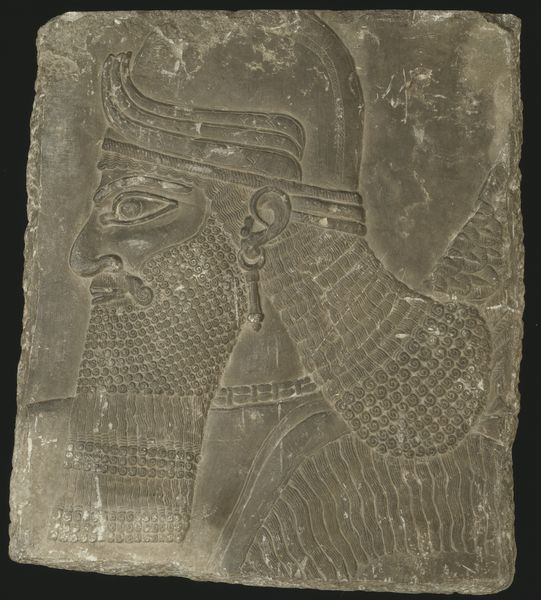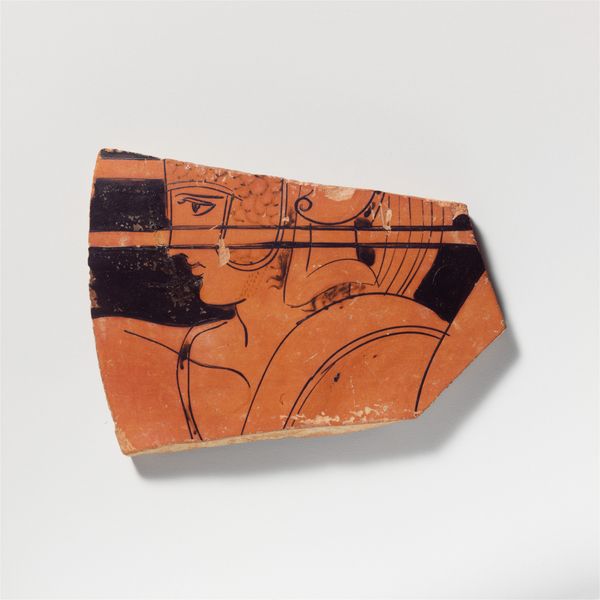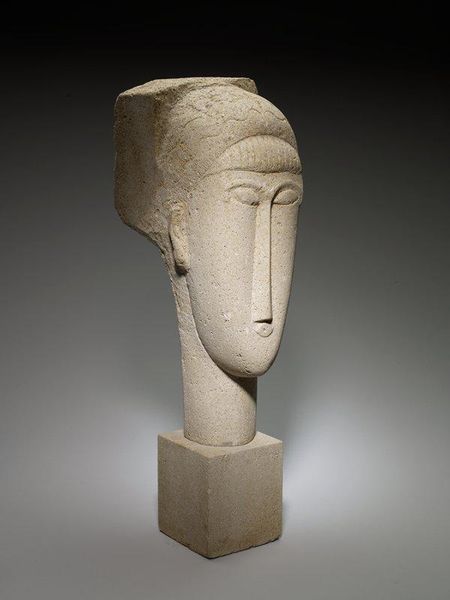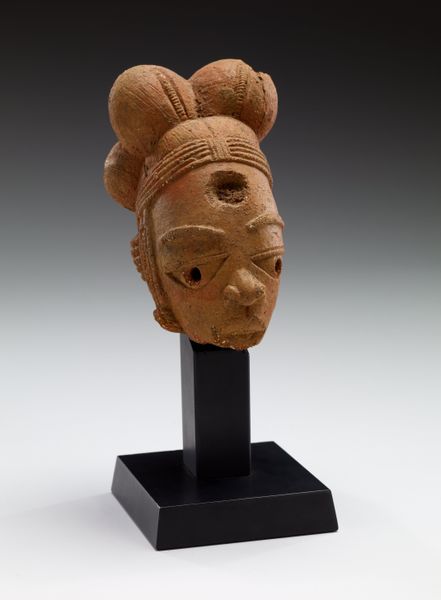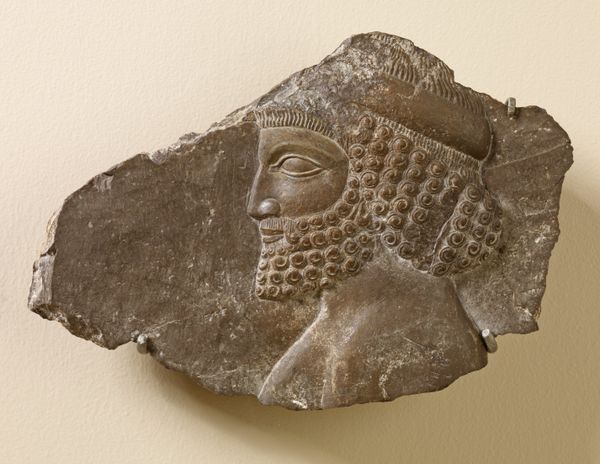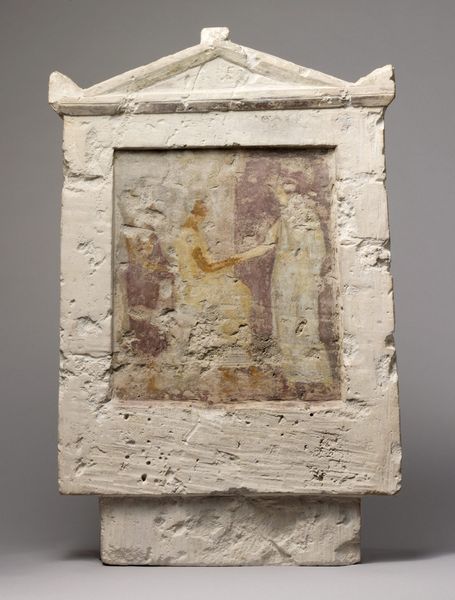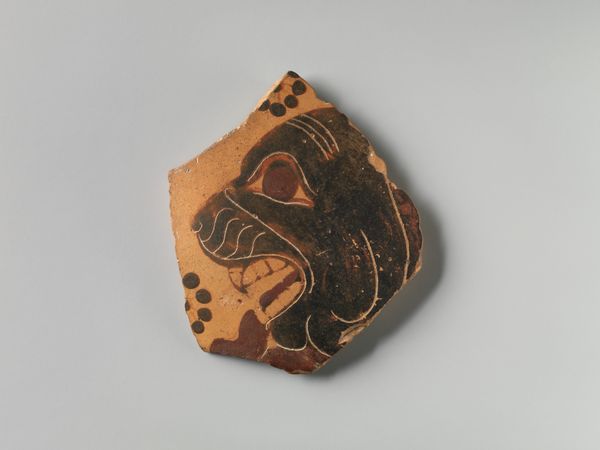
drawing, paper, pencil
#
portrait
#
drawing
#
sculpture
#
ancient-egyptian-art
#
paper
#
ancient-mediterranean
#
pencil
#
line
Dimensions: 22.5 x 18 cm
Copyright: Public domain
Curator: This is a drawing from ancient Egypt called "Artist's Gridded Sketch of Senenmut," dating back to 1458 BC. Editor: Immediately, I'm struck by its starkness. The pale stone fragment contrasts sharply with the precise, dark lines of the portrait. Curator: Exactly! The piece is incredibly informative about artistic practices in that era. The grid is lightly sketched out on the stone—likely limestone—to proportion and create the final painted relief of Senenmut. Pencil on paper hadn't been invented yet! Editor: And Senenmut himself…he was such an important figure, the architect and official who served under Hatshepsut. The stylized profile immediately brings to mind power, order, but also a hint of introspection. Notice how the artist has depicted the eye? It's almost…vulnerable. Curator: The labor is really important to consider, as it speaks to this piece’s inherent social context. The drafting would have involved many artisans, not just the named artist, each contributing to the overall production of royal imagery and state ideology. And there would've been careful planning involved for transport, all those logistics... Editor: It speaks volumes about their understanding of visual representation. I can also see that the unfinished nature heightens that intimacy somehow, doesn't it? The image carries that incredible cultural weight through its very imperfection. The artist used very simple, effective visual language in this sketch. Curator: And look closely: the stone is chipped and worn. These subtle imperfections evidence how objects evolve. The grid isn’t perfect, the lines aren’t perfectly straight; each element reminds us this wasn't mass production. There's hand craftsmanship and a human connection to the material at every point of its production. Editor: Looking at the lines forming the wig and the almost wistful expression makes me reflect on memory, even the endurance of images across millennia. His image lives on here because he lived so prominently during his time. It almost invites a modern, empathetic reading, too, you know? Curator: Yes, and considering the materials reminds us of what it was and what it stands for in its historical period. Thank you, what great thoughts. Editor: Indeed, what a powerful portrait and wonderful window into Senenmut's place and influence.
Comments
No comments
Be the first to comment and join the conversation on the ultimate creative platform.
